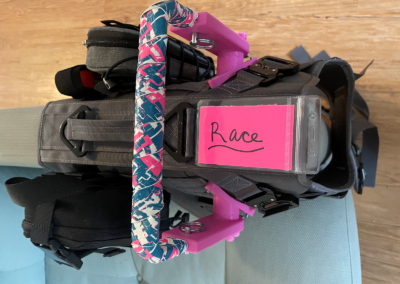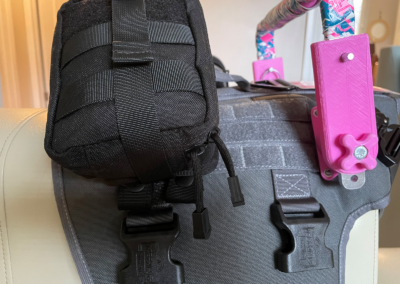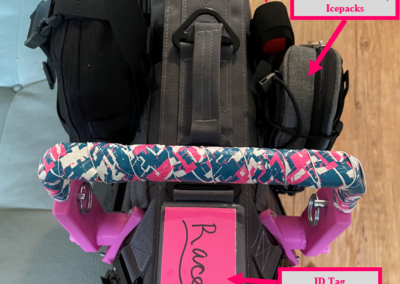TOP DAWG Engineering: Service Dog Harness
Overview
The project addresses the challenges of providing a specialized dog harness not currently available on the commercial market for a military veteran family. The user is an eight-year-old girl named Svea. She has type 1 diabetes. Svea is accompanied by her service dog, Race, a three-year-old golden retriever poodle mix. Team Top Dawg Engineering customized a dog harness that protects the user, the dog, and the diabetic medical supplies. The solution created is a one-of-a-kind harness that can support the user and provide storage capabilities, all while maintaining a lightweight and comfortable structure. The harness system improves the quality of life for its user and family members by putting life-sustaining medication and equipment within easy reach. It also allows Race to provide physical support for Svea during hypoglycemic and hyperglycemic episodes, which provides peace of mind for the family.
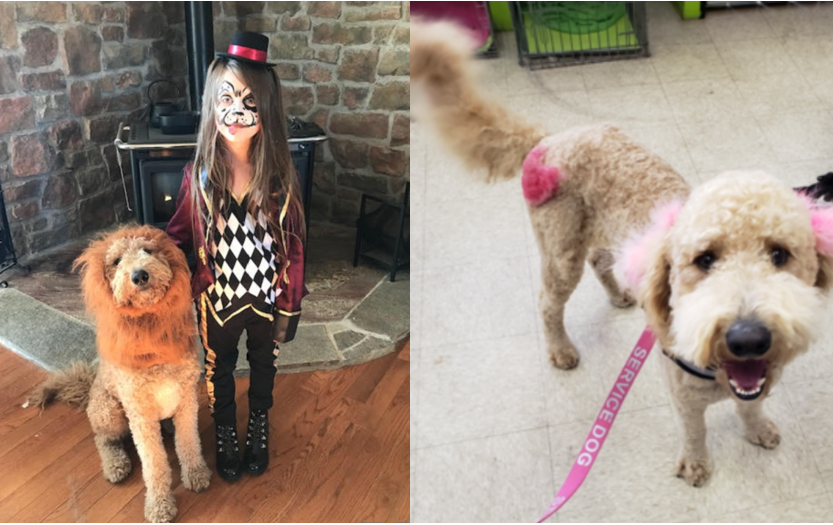
Acknowledgements
Team Top Dawg Engineering would like to thank the client, Scott Huyvaert. Thank you for facilitating the opportunity for the team to work on such a meaningful project. The team would also like to thank the Project Advisor, Sue Anderson. Thank you for supporting and assisting the team over the past two semesters. Thank you for guiding Team Top Dawg through the engineering process. Additionally, the team would like to thank the Rolenc family, specifically Svea and Nicolle. Thank you for your willingness to help the team and for assisting with the testing of the harness system.
Live Zoom Chat
Use the link below to join us live from 8:00 – 10:30 a.m. on April 29, 2021
Please use passcode:
Or iPhone one-tap: 16699006833,92421397114# or 12532158782,92421397114#
Or Telephone:
Dial: +1 669 900 6833 (US Toll) or +1 253 215 8782 (US Toll)
Meeting ID: 924 2139 7114
Team Members
- Taylor Duffy
- Dylan Goode
- Samuel Kesner
- Ryan Kinder
- Danny Riley
- Kyle Thomas
The Client
- Scott Huyvaert & QL Plus+

Project Advisor: Prof. Sue Anderson
Technical Advisor: Prof. Stephen Geer & Prof. Jeffrey Wheeler
Donations made by: QL Plus+
Video
Elevator Pitch
The need for service dogs is more relevant today than ever before. The abilities of a service dog vary from person to person, but the one constant among them is the need for a reliable and functional vest or harness for their specific purposes. Based on current market research of existing vests and harnesses, there are no highly customizable units currently available on the market, and more specifically there are no real solutions for a person in need of a vest that carries diabetic equipment and stores the insulin at a desired temperature for a long period of time. Additionally no real solutions exist for a harness with a rigid handle that is adjustable, detachable and customizable to suit the users needs.
Based on all these specifications, the team focused on tackling this issue and creating a solution that would serve these various purposes. Overall, the final harness iteration provides functional stability for the user during a medical emergency while keeping the dog and medical supplies safe. Additionally, the harness provides extensive customizability of orientation preferences in terms of pocket placement and handle orientation. The harness also successfully protects and transports a glucose monitor, an emergency injection, insulin, and any other desired medical supplies. The abundant customization in the design allows the harness system to be easily tailored to other service animals, including guide dogs for the visually impaired.
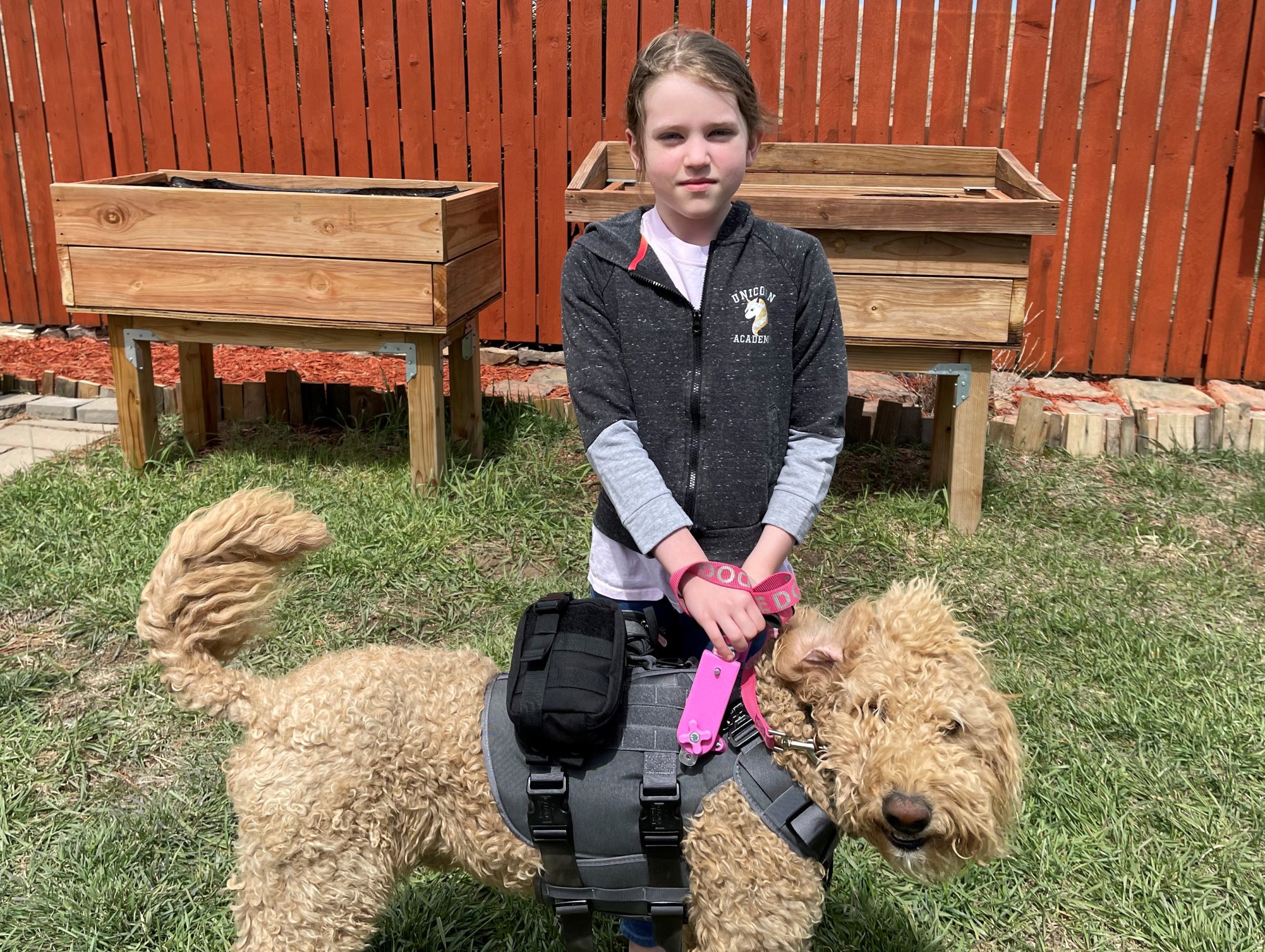
Design Approach
The service dog, Race, is responsible for carrying life-sustaining medical devices as well as medication. The user, Svea, can experience bouts of dizziness and impaired balance from a sugar high or low. All this being considered, it was important to implement a design to an existing base harness that would be functional, comfortable to the dog, safe for the user, and allowed for a more efficient design process. The approach to this design thus consisted of two primary areas. The first was pocket design and creation, and the second was handle design and implementation. Both of these subsystems were the primary components being added to the harness, and served as the main design focus of the final project.
The team thus broke up into two groups to focus on each of these design areas and direct all the group’s attention to one subsystem to achieve a desirable outcome. At the end of the project, the two teams came together to implement all of the components. For the pockets, the main focus was to ensure the insulin vials would be kept cool and protected from impact forces, heat, and be able to sustain cool temperatures throughout a typical day. Additionally, the pockets needed to be easily accessible for emergency use and user friendliness. It was also necessary that the pockets be comfortable for the dog to carry without protruding too much from the base harness.
For the handle subsystem, many considerations needed to be accounted for in each design iteration and implementation. The handle needed to be rigid enough to handle the leaning weight of the user, while being lightweight enough for the dog to carry. Additionally, it needed to be adjustable and detachable from the harness to ensure ease of use in a variety of atmospheres it may be involved in. Lastly, the handle needed to be soft enough for the user to prevent injuries that may be caused from the dog running, shaking or other such activity that could harm the user from a metal handle being exposed with no relevant padding for protection.
Each subsystem underwent a redesign process after each round of testing. The initial design after testing failed strength tests, adjustments were cumbersome, and the pockets were deemed too obtrusive. The designs were revised to solve these issues and then tested again. Based on user feedback for the new design, some durability issues with the harness and interference problems with the pockets arose. The product again underwent changes to address the reported errors. Ultimately all these considerations were taken into account for the final prototype design.
SolidWorks Part Renders
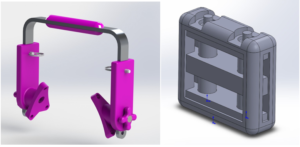
Insulin Vial Storage Items
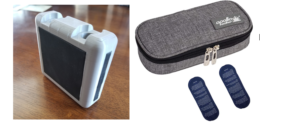
Storage Pockets
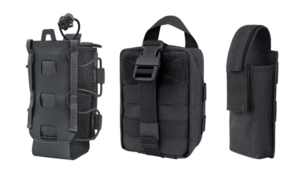
Design Solution
The service dog harness created is customized to protect the dog, the user, and the medical supplies. The base dog harness that was utilized is durable, waterproof, and adjustable to a variety of dog sizes. The harness also has a rigid frame, coordinated with a rigid handle, to provide stabilization to the user. The fabricated rigid handle allows for height and angle adjustments, allowing for optimized comfort for the user. The angle can be adjusted by loosening two knobs on the side of the harness. Once loose, the handle can be moved to other preset angles. Completely loosening the knobs and removing them will allow the handle to be taken off of the harness. In terms of pocket contents a 3D printed insulin vial case was fabricated to ensure the protection of the insulin. Additionally, an insulin travel case made of thick fabric and insulating materials was utilized in conjunction with ice packs to ensure the proper temperature storage of the insulin during times of travel.
The pockets themselves are tactical pouches geared towards durability, comfort, and ease of use. The thick, nylon pouches possess significant padding in order to ensure that the contents of the pockets remain intact. The molle webbing compatibility of the pouches, as well as the harness, assist in securing the pockets tightly against the harness and mitigating any interference issues when the user is walking directly next to the dog. The design of the pouches, such as the tear away glucose monitor case, the easily accessible travel case pouch, and quick release Velcro on the emergency shot pouch, allows for proper containment as well as a quick removal process of equipment in the event of an emergency.
Overall, the final harness iteration provides functional stability for the user during a medical emergency while keeping the dog and medical supplies safe. Additionally, the harness provides extensive customizability of orientation preferences in terms of pocket placement, handle height, and handle orientation. The harness also successfully protects and transports a glucose monitor, an emergency shot, insulin, and any other desired medical supplies. In conclusion, all of the qualities of the harness were geared towards fulfilling the needs and wants set by the stakeholders. As described above, these benchmarks were achieved and the final product meets all desired specifications. The client has expressed extremely positive reviews about the final product.
Product Showcase
Next Steps
Moving forward the team will be creating an in depth user manual to cover safe usage and maintenance of the harness system as well as manufacturing a set of spare parts for quick replacement should something degrade over an extended period of time. Doing so will also reduce the future hassle for the client of acquiring more material and finding a manufacturer.
If this design was to be continued by another group, reducing the overall weight of the system would be a major goal. This might be done by exploring new design and manufacturing methods for the handle base and supports. The storage pockets for the life sustaining equipment could also be made custom to maximize space and user efficiency.
Meet the Team
Taylor Duffy
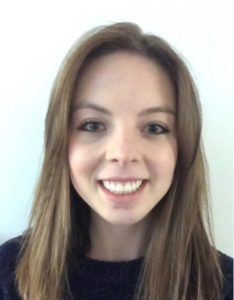 Taylor Duffy is the Communication Lead for Team Top Dawg Engineering. She is majoring in Mechanical Engineering and will graduate this upcoming May 2021. After graduation, Taylor will work as a Mechanical Engineer for Lockheed Martin Space. Her hobbies include yoga, water skiing, and attending baseball games.
Taylor Duffy is the Communication Lead for Team Top Dawg Engineering. She is majoring in Mechanical Engineering and will graduate this upcoming May 2021. After graduation, Taylor will work as a Mechanical Engineer for Lockheed Martin Space. Her hobbies include yoga, water skiing, and attending baseball games.
Dylan Goode

Dylan Goode is the Technical Lead for Team Top Dawg Engineering. He is majoring in Mechanical Engineering and is graduating this May 2021. Dylan is planning on working in engineering full time post graduation, and will be job searching for such a role once the semester concludes. His hobbies include skiing, football, 3D printing and creating new things.
Samuel Kesner

Samuel Kesner is the Treasurer for Team Top Dawg Engineering. He is majoring in Mechanical Engineering and will graduate in May 2021. After graduation, Samuel will commission as an officer in the Marine Corps. His hobbies include hunting, fishing, and working on his truck.
Ryan Kinder
 Ryan Kinder is the Project Manager for Team Top Dawg Engineering. He is majoring in Mechanical Engineering and is graduating May 2021. Ryan plans on working in engineering full time post graduation in the Denver area, and will be job searching for a role once the semester concludes. His hobbies include hunting, hiking, and general tinkering.
Ryan Kinder is the Project Manager for Team Top Dawg Engineering. He is majoring in Mechanical Engineering and is graduating May 2021. Ryan plans on working in engineering full time post graduation in the Denver area, and will be job searching for a role once the semester concludes. His hobbies include hunting, hiking, and general tinkering.
Danny Riley

Danny Riley serves as the Stenographer for Team Top Dawg Engineering. He is a Mechanical Engineering major planning to graduate in December 2021. He is currently seeking a full time engineering position that will coincide with graduating in the fall. His hobbies include working on cars, lifting weights, and spending time with friends.
Kyle Thomas
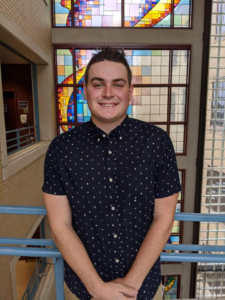
Kyle Thomas serves as the Scheduler for Team Top Dawg Engineering. He is majoring in Mechanical Engineering and is graduating this May 2021. He is currently seeking a full time Engineering position. His hobbies include coaching High School Football, playing board games, lifting weights, and riding/fixing ATV’s.
